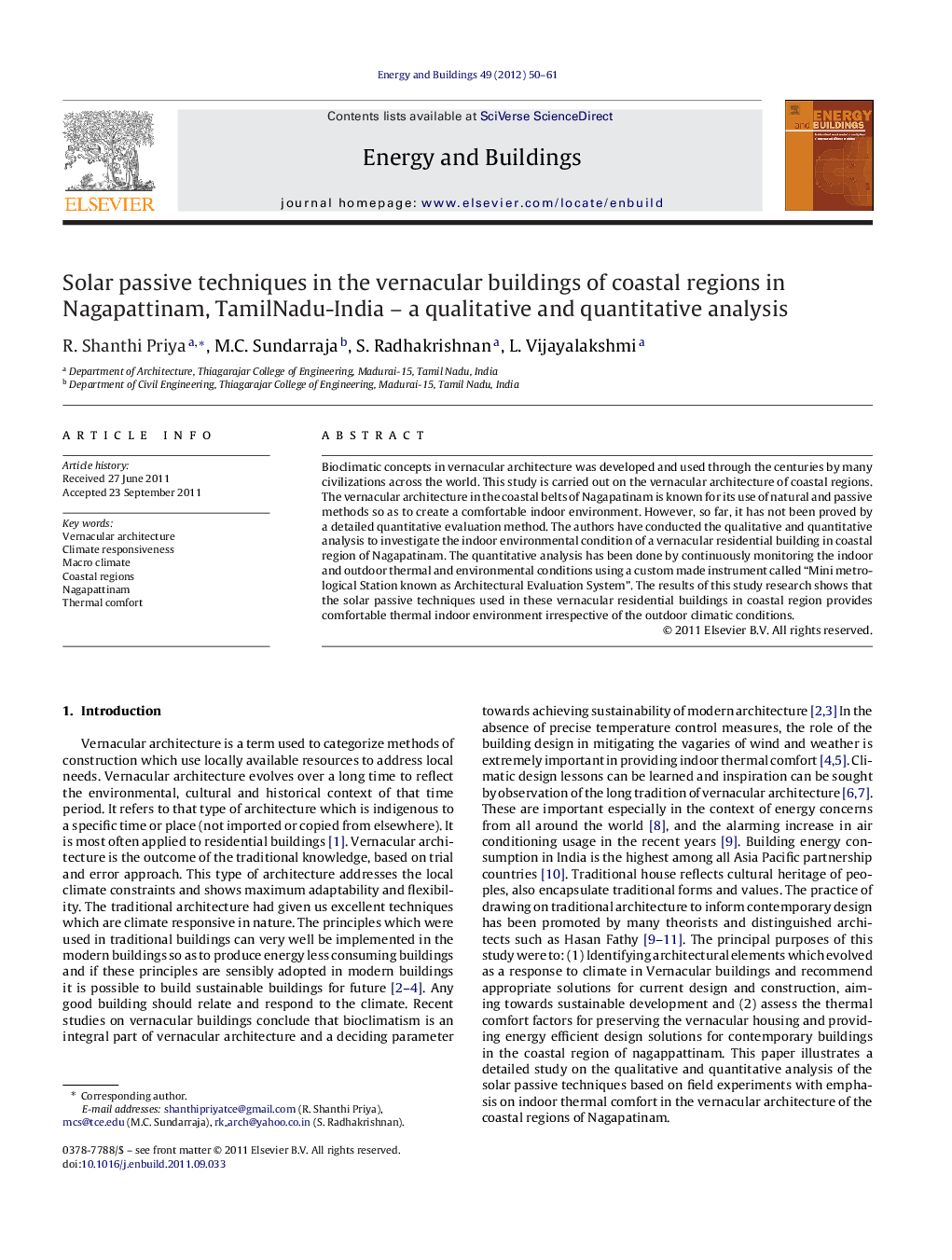| Article ID | Journal | Published Year | Pages | File Type |
|---|---|---|---|---|
| 263905 | Energy and Buildings | 2012 | 12 Pages |
Bioclimatic concepts in vernacular architecture was developed and used through the centuries by many civilizations across the world. This study is carried out on the vernacular architecture of coastal regions. The vernacular architecture in the coastal belts of Nagapatinam is known for its use of natural and passive methods so as to create a comfortable indoor environment. However, so far, it has not been proved by a detailed quantitative evaluation method. The authors have conducted the qualitative and quantitative analysis to investigate the indoor environmental condition of a vernacular residential building in coastal region of Nagapatinam. The quantitative analysis has been done by continuously monitoring the indoor and outdoor thermal and environmental conditions using a custom made instrument called “Mini metrological Station known as Architectural Evaluation System”. The results of this study research shows that the solar passive techniques used in these vernacular residential buildings in coastal region provides comfortable thermal indoor environment irrespective of the outdoor climatic conditions.
► Vernacular buildings are climate responsive proved by quantitative analysis. ► Solar passive features used in the traditional buildings can be used in the modern buildings. ► Thermal comfort is achieved in traditional buildings with the help of solar passive elements. ► Quantitative analysis proved, traditional buildings in coastal regions are climate sensitive.
